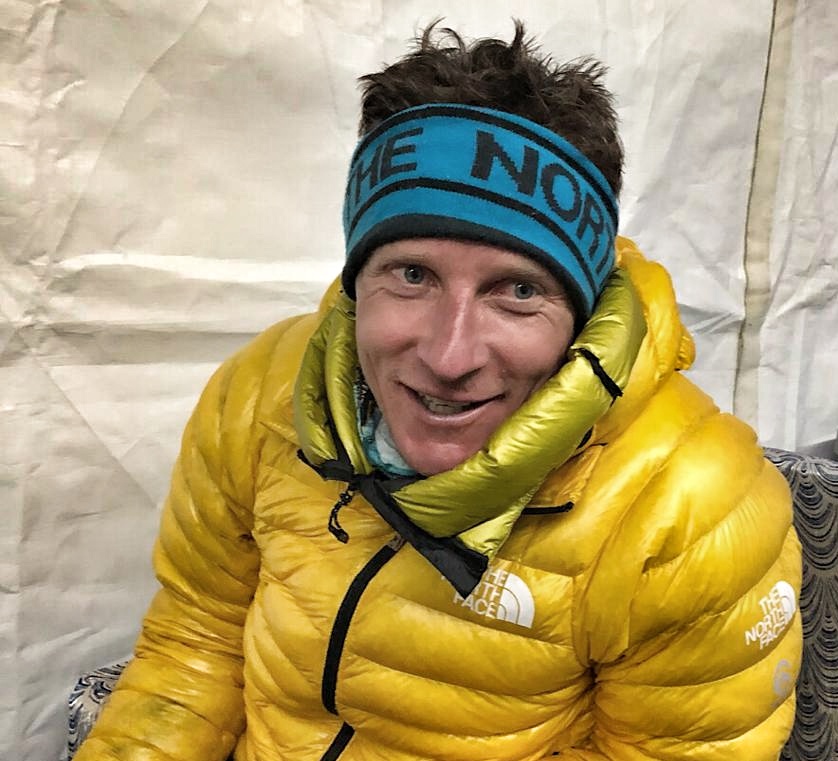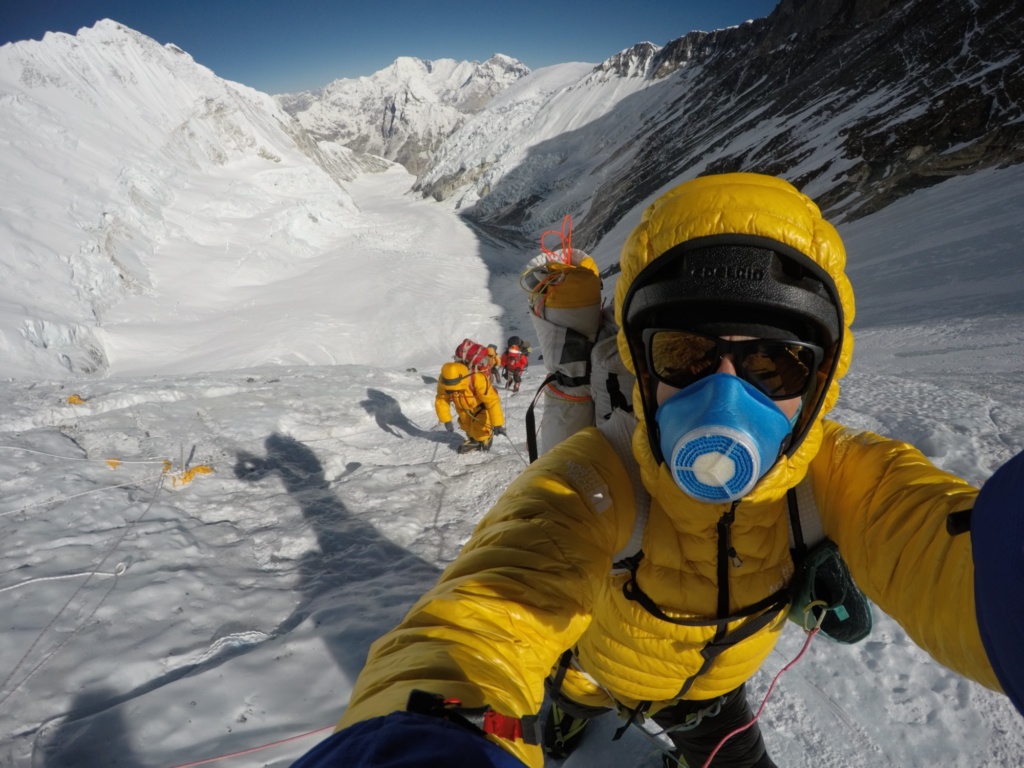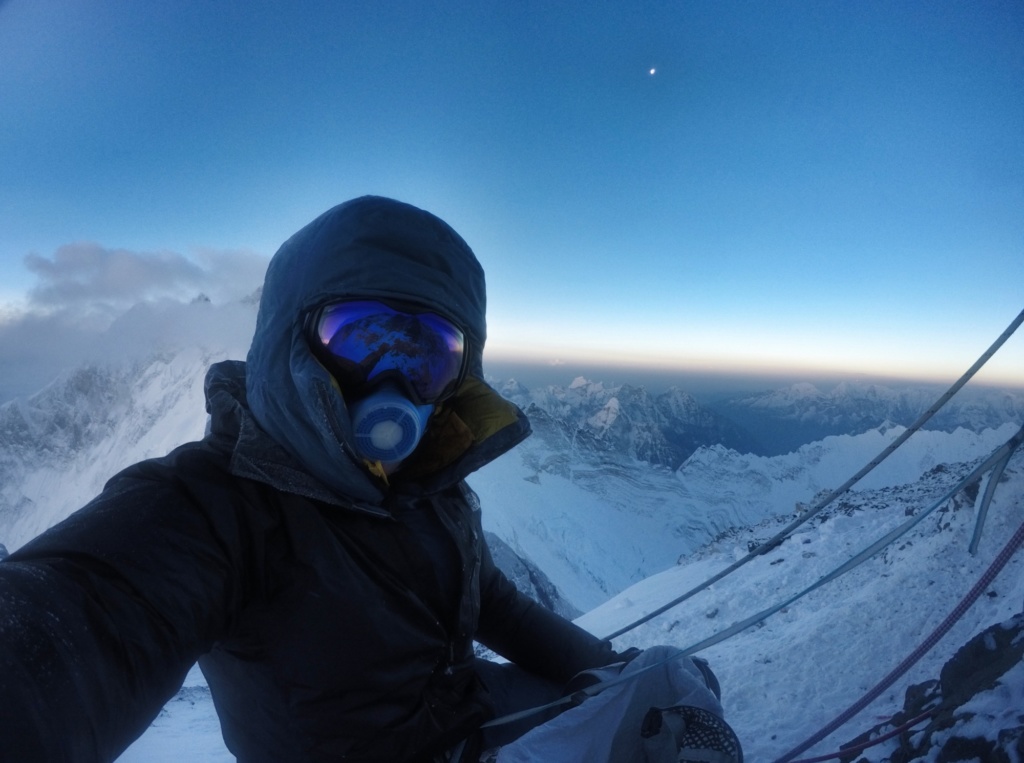There are a few climbers who still follow rules set by the golden age of mountaineering

Pushing the boundaries: David Göttler on attempting to scale Mt Everest without supplementary oxygen
The German alpinist was a one-man team on the highest mountain in the world this May
At a time when commercial climbing on Mt Everest (8,850m) is setting new highs — and lows — David Göttler, 40, and his climbs over the years present a striking contrast. For starters, the German alpinist was a one-man team on the highest mountain in the world this May. Besides, he was attempting the climb without the use of supplementary oxygen.
What makes for news these days is the story of a first on any mountain, how a tragedy unfolded on the climb and if somebody got away by the skin of their teeth or worse, died on the mountain. But in the process, most forget the finer aspects of what mountaineering is all about. It’s what Göttler’s attempt puts into perspective.
No, he didn’t make it to the top of Everest this year; nor did he lose his digits or had to be rescued off the mountain. Just 100 vertical metres below the summit, Göttler simply turned around. Yet, his story is important during a season that saw 11 deaths on Everest and 21 in all across the high mountains of Nepal.
Mountaineering in its purest form has been perceived as an activity where a climb has been pulled off without the use of supplementary oxygen. It’s how the masters of the sport such as Reinhold Messner and Peter Habeler, the first men to climb Everest without oxygen in 1978, perceived the sport. Others, like Göttler, simply call the use of oxygen as “cheating”, akin to doping in other sports.
Set apart this season (since the numbers are still being tabulated), the last time a climber reached the top of Everest without the use of oxygen was in 2017. During that May, a total of 673 climbers reached the summit — just 11 of these made it without the use of supplementary oxygen.
“To me, there are different kinds of successful climbs. If you get massive frostbites or lose a toe or finger, it is not really successful. Or if I were to use oxygen. But that is my personal definition and where I draw the line. It’s the same for everybody else in the mountain and they just need to be honest about it at the end,” Göttler says.
“When I started climbing, it was with a small team and we never used oxygen. So it never occurred to me while climbing 8,000 metre peaks either. That is the challenge that these high mountains present, and reducing them to a 6,000 metre peak by using oxygen is not fair any more,” he says of his climbing philosophy.
The German arrived at base camp with a plan to carry his own gear to the intermediate camps, en route the top — a solo climb without the help of Sherpas, which few attempt these days. Yet, it was still quite a contrast to his last club with Hervé Barmasse on the south face of Shishapangma in 2017.

“We were the only two humans on the entire mountain — a very different game. On Everest, I never had to break trail, there were fixed ropes, I could find shelter if my tent was damaged and get help if needed,” he recalls.
As part of his acclimatisation rotations, Göttler slept five nights in Camp 2 and one in Camp 3, and headed down to Pheriche each time to recover. Like most climbers, his summit push was delayed due to bad weather at the start of May. Once the ropes were fixed mid-month, Göttler planned the final climb, well aware that there would be a lot of people on the mountain in the next few days.
On 23 May, Göttler set out at 2.30am from Camp 4 at South Col. While most started out between 6-9 pm the previous evening, he picked the late hour in anticipation of the crowds he was expecting.
“I had learnt from Lhotse and Makalu that without oxygen, I had to start late to have the sun as early as possible. For me to be out there the whole night when it’s really cold would have taken even more energy out of me,” he says.
Upto 8,500 metres, he found almost nobody and he maintained his own pace. But once above South Summit (8,750m), he came across a long line of climbers making slow progress or, in his own words, not moving at all, besides an even greater number descending on the route at the same time.
“If I had continued, I wouldn’t have been able to control the situation. In that line, where overtaking is almost impossible or with a very high risk, I would depend on how fast others move. And that would have put me in a very dangerous situation,” Göttler says.

It’s not the first time Göttler had turned around on a mountain.
“I try to think about all the possibilities of what can happen — on Everest, two lights came up. One was the weather, since the wind had picked up and snowfall had started. And the other was the line of people coming down between the main summit and the South Summit. These are decisions I had made before even starting,” he says.
On 22 and 23 May, five climbers died on Everest due to various reasons.
“As my friend Ueli Steck once said, the plan is ‘not to epic’, which means, to not get into an emergency. Besides, once you put your money in an expedition, you should see it as money spent — gone, whatever is the output. I’ve had so many climbs where I didn’t get to the top, but through all of them I learnt a lesson that has helped me at another point of my life,” he says.
Göttler believes that he would have easily reached the summit had he opted to use oxygen. At the same time, he was aware of the possible queues on the mountain. But he uses neither as an excuse for his unsuccessful attempt.
“If you want to push your boundaries and challenge yourself, failure is not bad. It’s just a part of the journey,” he says.
“The passion for the sport brings me back each time. And not reaching the summit makes the entire process all the more enjoyable,” Göttler says.